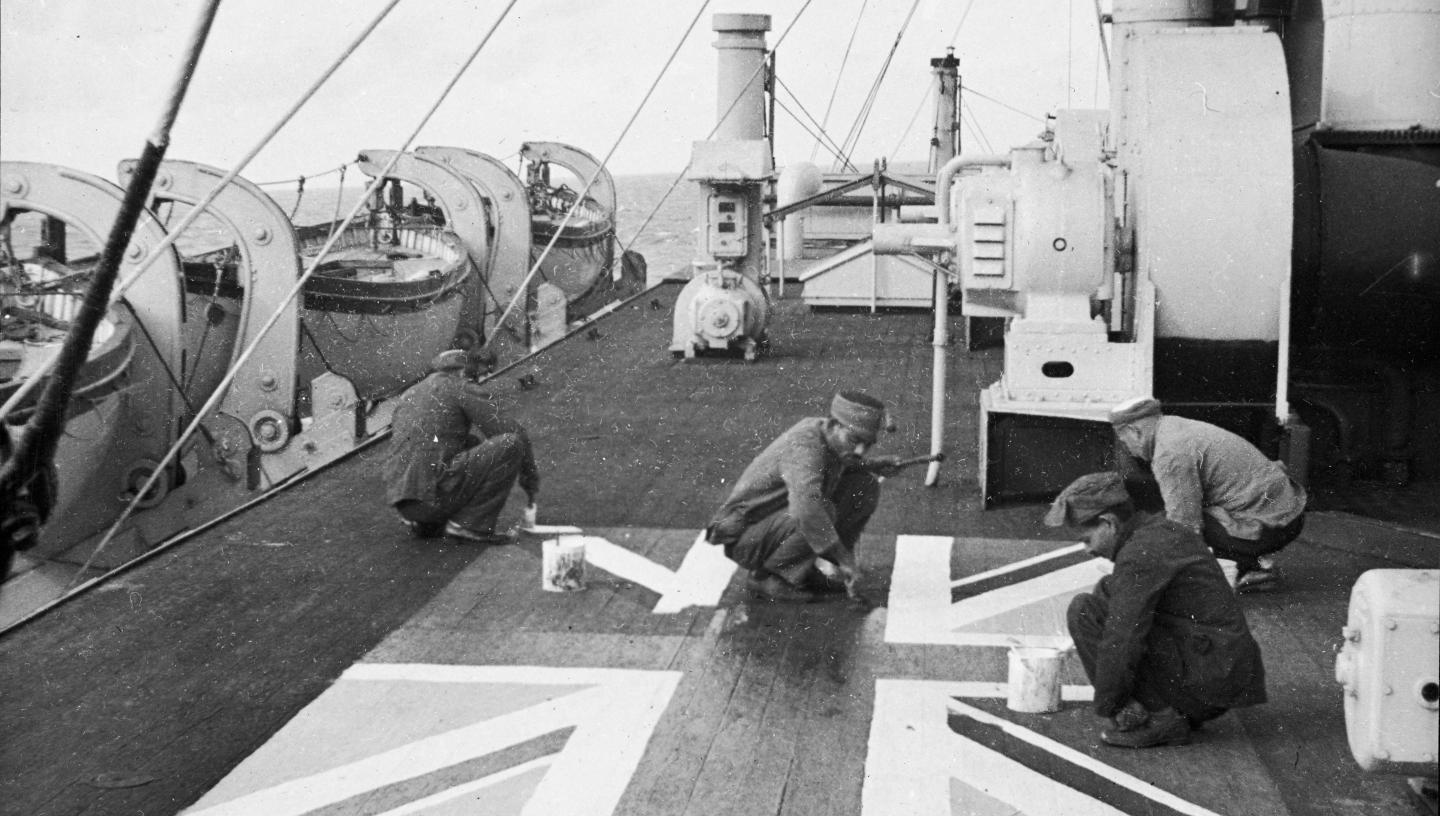
Essential Information
| Location | |
|---|---|
06 Sep 2016
Poor records mean the valuable contribution of Asian crew members to Britain's mercantile fleet have often remained hidden. However new crew lists found in our archives promise huge potential for future research.
The Caird Library’s collections have proved invaluable in researching Britain’s mercantile fleet. However, the poor maintenance of records detailing the employment of Asian crew members has led to a lack of awareness of their contribution to the British maritime world. When crew lists were found amongst the James Nourse collection (NOU/10/7) detailing Asian men who served on British ships during the second world war, their existence was hugely significant.
I interviewed Dr. Georgie Wemyss of East London University to find out how important the crew lists are to her current research.
How have you used these records in your research?
I am interested in highlighting the hidden histories of Britain’s South Asian populations which have been invisible for too long. The James Nourse records are important because there are very few records of the names of Asian seafarers who were employed under Indian Articles on British ships before 1947.
In 2002, the historian, Rozina Visram, published a ground breaking study Asians in Britain: 400 years of History. Her book was based on two decades of archival work in which she was able to build a picture of the globalized Indian maritime workforce that was the root of many of Britain’s working class South Asian communities as well as communities on other continents.
However, when she was carrying out her research the James Nourse records were unavailable and it was thought that the Indian seafarers would remain forever anonymous. A result of that anonymity is that people who are interested in researching their family histories who know that their ancestors worked on ships under Indian Articles, have little hope of finding out specific information about their working lives. It also contributes to a wider societal lack of awareness about the importance of Britain’s Asian maritime workforce.
Have you uncovered any interesting facts or stories in the records?
I found out some very specific information about two crew members listed on the MV Sutlej which was torpedoed in 1944. They are Fazle Huq, who is listed as a general servant ( a member of the saloon crew) and Sahib, a Tindal (a member of the deck crew). Written in pencil notes on the document is ‘Vessel lost enemy action 26 February 1944. Survivors: 3rd Officer; Chief, 2nd: 3rd and 4th Engineer; 2 deckhands’.
Using the web I discovered that the ship had been sunk in the Indian Ocean and that the captain of the Japanese submarine had later been convicted of war crimes for using machine-guns to kill fifty surviving MV Sutlej crew members on deck or in sinking lifeboats. However, later on I found that the surviving chief engineer’s account of the experience exists in the National Archives. He records how after the ship was sunk, two rafts were adrift for 49 days.
The engineer wrote that Fazle Huq Mangloo had swam to collect provisions, rescued the 3rd Engineer who got into difficulties when swimming and kept everyone alive by catching birds to augment the food supplies. He also referred to Shahib Sadick Sardor as being ‘outstanding in catching fish’.
Have the records helped to fill in any existing gaps in your research?
Yes, but as the example above illustrates, filling in gaps exposes greater gaps. So far I have only found these two references to two crew members. Now I want to find out more about the lives of these men after their rescue. And what about the other men listed on that ship? It seems that most of them did not survive. Do their descendants know about their war service? Are their losses acknowledged in WW2 commemorations?
Who else might find the records useful?
The lists may be useful for people who know that their ancestors worked on British ships and want to find out more about their journeys and lives. Obviously the names listed are a fraction of the total but that doesn’t make them less important. Some of the lists include the father’s name and district of birth of crew members from Sylhet, Noakhali, Chittagong and Dhaka in present day Bangladesh.
As well as family research, historians may find this useful building on existing knowledge in tracking patterns of recruitment onto ships. For example, the names indicate that the cooks were recruited from Dhaka’s Catholic community whilst the deck and engine crews were predominantly from Sylhet and Noakhali. Most ships listed had a single named Chinese crewmember, recruited as a carpenter.
We know from existing research that life on board was especially harsh for Asian seafarers who were paid less than white crews and were often subjected to racism and physical violence. Their response was to ‘jump ship’ in different ports. Historians may be interested in using the records to investigate this aspect of the seafarers lives and the extent to which ‘jumping ship’ led to the establishment of Asian communities across the globe.
Uncover more hidden histories at our Muslims at Sea Study Day on 10 September